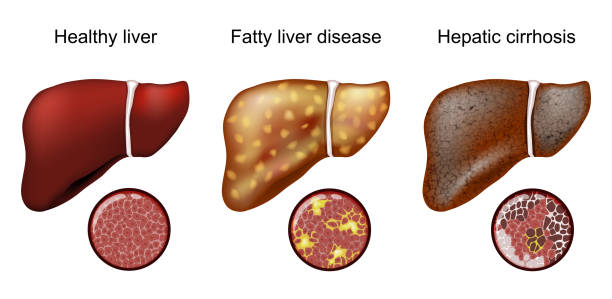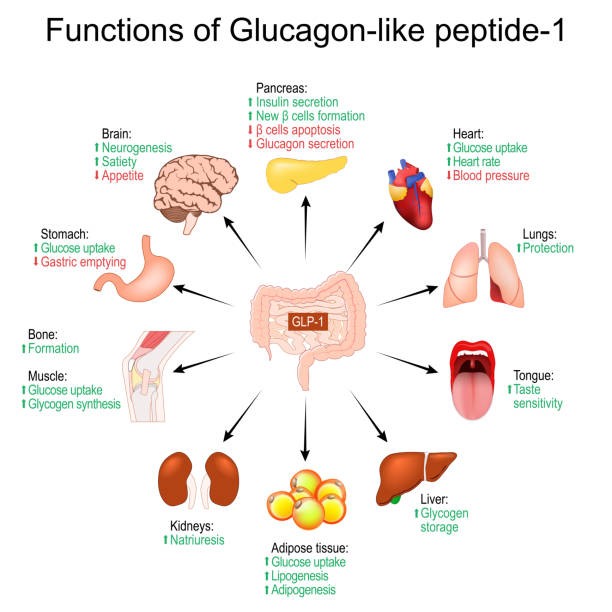Non-Alcoholic Fatty Liver Disease (NAFLD) is a broad term used to describe a range of liver conditions that are not caused by alcohol. There’s simple fatty liver (steatosis), where more than 5% of liver cells contain large fat droplets, without other known causes of fatty liver in people who consume little to no alcohol. And there’s also Non-Alcoholic Steatohepatitis (NASH) which is a more serious form of NAFLD, indicated by fatty liver with inflammation and damage in the liver cells. NASH can progress to cirrhosis, where the liver develops nodules and intensive scarring.

Who is at Risk for NAFLD?
It’s estimated that around 38% of people worldwide have NAFLD (up from just 25% in 2006), and up to 15% of these individuals having NASH. There is a strong link between NAFLD and metabolic syndrome. People with diabetes or obesity have a higher risk for developing NASH.
Conditions related to metabolic syndrome, such as type 2 diabetes, obesity, high blood pressure and high cholesterol, are all associated with NAFLD. About half of people with diabetes also have NAFLD, with a greater risk of progressing to NASH, treating gastrointestinal and liver fibrosis than those without.
It is recommended that all diabetic patients be screened for advanced fibrosis every 1-2 years. Obesity, especially when fat is concentrated around the abdomen, increases the risk of NAFLD and its progression.
What are the Treatment Options for NAFLD?
The most well-studied and effective treatment for NAFLD is weight loss. In one study, losing more than 10% of body weight led to a reduction in liver fibrosis, while losing more than 5% reduced liver fat.
However, achieving weight loss, especially through lifestyle changes like diet and exercise alone, is challenging. One study found that less than one-third of individuals achieved more than 5% weight loss over three years, and only a quarter of these people were able to maintain it.
This is where GLP-1 medications come in.

How do GLP-1 receptor agonists work?
GLP-1, or glucagon-like peptide-1, is naturally produced in the body and released from the small intestine after eating. It helps lower blood sugar levels by promoting insulin release and reducing glucagon levels. It also slows down stomach emptying and helps reduce appetite.
Why are GLP-1 agonists being used for NAFLD?
Currently, there are no FDA-approved medications for NASH. However, GLP-1 receptor agonists have shown the most potential among available drugs. AASLD guidelines suggest considering them for patients with obesity and diabetes, as they might benefit NAFLD.
In the LEAN trial, liraglutide was found to have higher rates of NASH resolution and lower rates of fibrosis progression. Those on liraglutide also lost about 5.5% of their body weight over the 48-week study.
A larger study published in the NEJM found that NASH resolution was dose-dependent, occurring in 59% of the semaglutide group versus 17% of the placebo group. An improvement in fibrosis stage was seen in 43% of the higher dose semaglutide group versus 33% of the placebo group. Patients who were given semaglutide lost 12.5% of their body weight over a 72 week period. Tirzepatide has also shown promising results with up to an 8% reduction in liver fat content in a trial.
What’s in Store for GLP-1 as NAFLD Treatment
Studies on the safety and efficacy of GLP-1 agonists in decompensated NASH cirrhosis are lacking as of this writing. However, a retrospective study showed that impact of GLP-1 agonists were associated with lower rates of liver-related complications compared to other diabetes medications.
NAFLD affects a significant number of people and its prevalence is likely to increase with rising rates of type 2 diabetes. Many people with NAFLD may not show symptoms, but a substantial portion of these individuals may develop progressive liver disease.
Trials have so far supported the use of GLP-1 analogs or SGLT2 inhibitors in people with NAFLD and type 2 diabetes. With ongoing research, these drugs may receive approval and guidelines for treating NAFLD specifically.